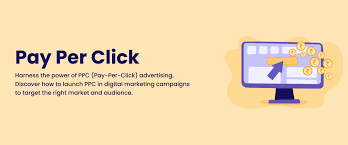The Power of Pay-Per-Click Advertising
Pay-per-click (PPC) advertising is a powerful digital marketing strategy that allows businesses to drive targeted traffic to their websites by paying for ad placements on search engines and other online platforms. Unlike traditional advertising methods, PPC offers a cost-effective way to reach potential customers at the exact moment they are searching for products or services related to your business.
One of the key benefits of PPC advertising is its ability to deliver immediate results. By bidding on relevant keywords, businesses can ensure that their ads appear prominently in search engine results pages, increasing visibility and driving qualified traffic to their websites. This targeted approach not only helps increase brand awareness but also boosts conversion rates, ultimately leading to higher ROI.
Another advantage of PPC advertising is its flexibility and scalability. With PPC campaigns, businesses have full control over budget allocation, ad targeting, and performance tracking. This level of customization allows for real-time adjustments to optimize campaign performance and maximize results.
Furthermore, PPC advertising provides valuable insights into consumer behavior and preferences through detailed analytics and reporting tools. By analyzing data such as click-through rates, conversion rates, and keyword performance, businesses can refine their targeting strategies and tailor their messaging to better resonate with their target audience.
In conclusion, pay-per-click advertising is a dynamic and effective marketing tool that can help businesses drive traffic, generate leads, and increase sales in today’s competitive digital landscape. By leveraging the power of PPC, businesses can achieve measurable results and stay ahead of the curve in an ever-evolving online marketplace.
Mastering Pay-Per-Click: Understanding Rates, Earnings, Mechanics, and Real-World Examples
- What is a good pay-per-click?
- How much can I get paid per click?
- How does pay-per-click work?
- What is an example of a PPC?
What is a good pay-per-click?
A good pay-per-click (PPC) campaign is one that effectively targets the right audience, generates high-quality leads, and delivers a strong return on investment (ROI). To create a successful PPC campaign, businesses should carefully research and select relevant keywords, craft compelling ad copy, optimize landing pages for conversions, and continuously monitor and adjust campaign performance. By focusing on relevance, targeting, and tracking key metrics such as click-through rates and conversion rates, businesses can ensure that their PPC campaigns are driving meaningful results and achieving their marketing objectives.
How much can I get paid per click?
The amount you can get paid per click in a pay-per-click (PPC) advertising campaign varies depending on several factors, such as the competitiveness of the keywords you are targeting, the industry you are in, and the quality of your ads. In general, the cost per click (CPC) can range from a few cents to several dollars or more. It is essential to conduct thorough keyword research, optimize your ad copy and landing pages, and continuously monitor and adjust your campaigns to maximize your earnings per click. By implementing strategic tactics and staying informed about industry trends, you can increase the potential payout per click in your PPC campaigns.
How does pay-per-click work?
Pay-per-click (PPC) advertising operates on a straightforward principle: advertisers pay a fee each time their ad is clicked. This model allows businesses to bid on specific keywords relevant to their products or services, with the highest bidder typically securing the top ad placement on search engine results pages. When a user enters a search query matching the selected keywords, the search engine displays relevant ads based on factors like bid amount and ad quality score. If the user clicks on the ad, the advertiser is charged for that click. Ultimately, PPC campaigns aim to drive targeted traffic to websites, increase brand visibility, and generate leads by connecting businesses with potential customers actively seeking their offerings.
What is an example of a PPC?
An example of a pay-per-click (PPC) advertising platform is Google Ads, formerly known as Google AdWords. With Google Ads, businesses can create text, display, and video ads that appear on Google’s search engine results pages and partner websites. Advertisers bid on keywords relevant to their products or services, and their ads are displayed to users who search for those keywords. The advertiser only pays when a user clicks on their ad, making it a cost-effective way to drive targeted traffic to their website and increase brand visibility.

